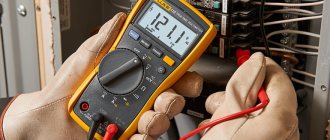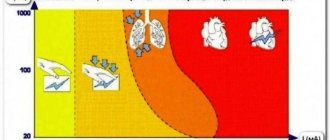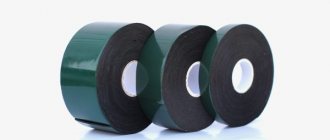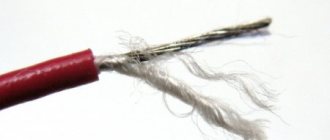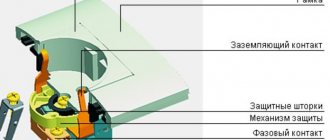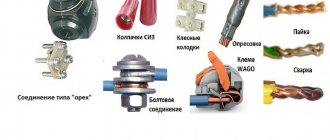Most men who own houses or apartments try to understand more or less all aspects of the household and prefer to carry out many repairs, installations, adjustments and other operations on their own, without involving a specialist. Naturally, if this is not associated with a high danger for yourself, for others, for property or even the entire building. Such completely acceptable actions include, say, installing a new socket or switch. If you de-energize a section of wiring or the entire apartment, if the wires in the socket are normal and of sufficient length, the socket (or switch) itself is purchased new - everything should work out without any problems.
How to extend wires in a socket
But quite often, when it comes to practical implementation, it is precisely the problem that emerges. Namely: the wires coming out of the wall into the socket box broke off due to repeated replacements, or were completely burnt due to insufficiently good contact. That is, there is absolutely no possibility of cutting, stripping the fresh end and tightening it into the socket terminal, since the wires are too short. And this is where the novice home handyman sometimes starts to panic - you can’t put the old socket back in its place, and you can’t install a new one. But there is no need to panic - you just need to find out how to build up the wires in the socket so that you can easily connect it, fix it in place, and all this - in full compliance with safety requirements.
There are several ways to do this - let’s deal with them in order...
What does it mean to extend the wire
Extension means increasing the length of a cable or individual wire. This connection is made not only mechanically, but also electrically. The resulting contact should be as strong as possible and have minimal contact resistance. This is a mandatory requirement for power wiring and input cables.
Wire extension technology
Basic methods of cable extension
There are many ways to extend wiring. They differ in the reliability of contact and complexity of implementation. Most electricians practice the following methods:
- extension using WAGO terminals;
- terminal blocks with screws for tightening;
- classic twisting of cores;
- soldering with tin solders (for copper wiring);
- welding of cores with a graphite electrode;
- connecting sleeves;
- electrical nut;
- extensions using Scotchlocks.
Scotch tape for connecting wires
Additional Information. The connection method is determined by the material of the wire and the current that flows through it. For high powers, soldering and welding of cores is ideal. Low-current circuits can also be connected in other ways. But if this is a high-frequency signal from a TV or Internet cable, then the connection point is made as compact as possible and without kinks.
The easiest way to build up. Old-fashioned method
The simplest of the listed methods of extension is the classic twisting of cores. The wires must be made of the same metal and preferably of equal cross-section. The procedure for building up is as follows:
- Using a knife, remove 30-50 mm of insulation from the ends of the connected wires.
- Twist the stripped wires together along the entire length of the exposed areas. The connection is made as tight as possible.
- Wrap the resulting twist with insulating tape.
Additional Information. If the cable length for a TV, computer and various office equipment is not enough, then it is not necessary to extend them. Typically, these wires are standard and available at a consumer electronics store. And the length that suits you.
Twisted pair extension
A situation often arises when you need to connect a TV or projector with an HDMI interface to a video source located in another room. For short distances this can be done with a standard cord of a certain size. However, when transmitting a signal over distances exceeding 20 m, it will not be possible to obtain a clear output picture.
The so-called “HDMI twisted pair extenders” will help you “extend” the cord. By themselves, they do not interact in any way with a standard cable. Extension cables are a separate set of switches that have an HDMI connector on one side and an RJ-45 connector on the other. To connect multimedia systems, use a network cable (twisted pair) with tips crimped at the edges. The quality of signal transmission depends on the cross-section of the wire cores and the density of contact in the connectors.
For your information!
When it is necessary to broadcast video over distances of more than 25 m, it is better to use active transceivers over twisted pair cables with external power.
Extension of wires going to the outlet
It is necessary to extend the wires for the socket, for example, when moving it closer to the floor under the European standard. It should be remembered that powerful consumers of 1.5-2 kW can be connected to the outlet. Therefore, twisting must be done efficiently. It is recommended to use the following connection methods:
- welding;
- soldering
- connecting sleeves;
Other extension techniques are also suitable. But their reliability and safety do not inspire confidence (we are talking about powerful consumers).
Copper conductors
It is easier to extend copper wire than aluminum. Three methods are suitable: welding, soldering, sleeves. Before connecting, the insulation must be stripped from the cable.
Welding is performed with a special transformer. It is expensive. It makes sense to purchase it for practicing electricians.
Soldering is done using an electric soldering iron, solder and rosin. A cheap way available to everyone. However, it requires minimal skills in working with a soldering iron.
Soldering copper wires
Sleeving (crimping) will require the purchase of a crimping press. The method is suitable for professionals who are willing to spend money on purchasing expensive tools.
Aluminum conductors
Aluminum cable is brittle. Keep in mind that it will easily break if bent repeatedly. The cores can be welded using a transformer with a carbon electrode. A gas burner will also work, but it is more difficult and dangerous.
Sleeving is also suitable. The connecting tube must be made of the same material as the cable core. Aluminum wire cannot be soldered with a soldering iron and solder. Molten tin will not be able to “stick” to the surface of this metal.
Crimping of aluminum wires
Soldering
This method is considered universal because it allows you to find a solution to the question of how to lengthen short wires in a socket and increase the cable to a sufficient length. Suitable for extending the cable in a socket only if you have a soldering iron and appropriate experience. The advantages lie in the high quality of the result and the possibility of using large cross-section conductors (4-6 mm 2 ).
For soldering wires, you need to arrange a special place. All tools and materials must be placed in such a way as to exclude the possibility of them getting under the sting. To extend the wire you will need:
- rosin;
- tinol;
- flux;
- soldering iron and stand for it;
- a sponge that can be used to remove dirt from the tip.
Extension of other types of wires
Apartment wiring is not limited to sockets, power input cables and lighting. Sometimes you have to deal with other electrical circuits. Therefore, it is necessary to know the nuances and technology of building all possible types of wires.
The putty wire broke
This happens on the section of cable where it exits from the concrete wall into the outlet. If the wire sticking out of the cement is at least 15 mm long, then you should try to extend it using one of the methods described above. More often it happens that the core breaks directly in the wall. In this case, you will have to pick up a hammer drill and clear the wire from the solution to get an end accessible for work.
Extending and relocating the power input cable
Extending the input cable in an apartment is a responsible job. Therefore, you will have to resort to welding. This connection method is the most reliable and nothing better has yet been invented. To weld power wires, a special transformer with a graphite electrode is used. It produces a high current of 100-150 amperes. If there is no transformer, then it is permissible to use a portable inverter-type welding machine. Before connecting the wires, they should be twisted tightly. Then mark the individual wires.
Electrical wiring welding machine
Wiring for high-power electrical appliances
Powerful consumers of electricity are capable of drawing high currents from the network, up to 10-15 A. Examples of such devices: electric stoves, kettles, irons and various stoves. Copper cables are used for connection and extension. When performing work, the following conditions must be observed:
- cross-section of cable cores is at least 2.5 square meters. mm;
- twist connection by welding or soldering;
- use of fabric insulating tape with non-flammable impregnation.
How to do extensions outdoors and in the rain and snow
Sometimes it becomes necessary to extend a wire located in the open air. This could be a SIP cable for powering an extension in a country house or lighting in a garden. In this case, special attention should be paid to sealing the joint.
Cloth tape will not work. Unlike PVC, it is able to absorb moisture from rain. It is convenient to use heat shrink tubes for sealing. Especially those that contain an adhesive layer inside.
Connecting sleeves for SIP cables with heat-shrinkable sleeves
Temperature sensor wires
If a thermocouple or digital three-wire meter is used as a temperature sensor, it is important to maintain the polarity of the connection. Extension wires are usually made of brittle alloys based on aluminum, chromium and copper. For connection it is possible to use simple twisting, screw or WAGO terminals. Soldering may not work. Depends on the specific type of alloy from which the wires are made. By the way, they are thin. Therefore, sleeves and nuts disappear due to too large sizes.
How to extend LED strip
It happens that after installing the LED strip, its brightness is not enough. Therefore, the lighting will have to be increased. When extending the LED strip, you should remember three basic rules:
- When connecting a new fragment, it is necessary to maintain polarity. That is, plus and minus. Usually these are red and black or gray and white wires, respectively.
- The LED tape is cut in special places. They are indicated by the scissors symbol.
- If the LEDs are RGB type, then there are four wires. They should be connected according to color coding. Red to red, green to green and so on.
Connector for extending LED strip
Twisted pair extension
A standard twisted pair cable contains eight wires. They are connected according to colors. The wire strands are thin and copper, so the best connection method is soldering with tin-lead solder. The grandfather's twist is also suitable. However, at high Internet connection speeds this can create problems. It would theoretically be possible to use sleeves and terminal blocks, but in reality it would be expensive and pointless.
Important! When extending signal and antenna wires, you should remember that they have a shielding layer. It is made in the form of copper or aluminum braiding in the outer layers of insulation. Its task is to protect internal conductors from interference. The screen is also subject to electrical connection. This rule applies to UTP wires for the Internet, audio and television cables. If the image ripples, then you should check the integrity of the screen up to the antenna.
Twisted pair connector
Stages of electric stove installation
Regarding the installation of an electric stove. If its appearance in your kitchen was foreseen in advance and there are appropriate electrical connectors in the room, installing the device will not be difficult. But when we are talking about, say, a country house that is not ready to receive such a powerful “tenant,” some problems may arise. An electric stove requires a lot of power (up to 5-8 kW), so it requires a special connection with grounding, which should only be installed by qualified electricians.
As for installation methods , the wiring can be open or hidden. With open wiring, all wires are laid in cable ducts or corrugated pipes. At home, hidden cable routing is mainly used - in grooves, which are then sealed with alabaster or cement.
Electric stoves are complex devices equipped with various timers and sensors. The working surface of some electric stoves is made of glass-ceramic material under which heating elements are located. An electric stove can be one, two or three-phase and consumes up to 10 kW of electrical energy.
Installation and connection of the electric stove occurs in stages. First, the device is unpacked and checked for mechanical damage. Then the power outlet is changed. A wire with a cross-section corresponding to the power consumption of the device is connected to the electric stove and connected to the power supply using a power plug .
The installation of an electric stove itself is not a complicated process, except that the stove must be leveled using legs and checked for functionality.
Our service offers connection of electric stoves in Moscow. We also carry out various related electrical work, such as moving and replacing sockets, extending wires and replacing circuit breakers and RCDs in the electrical panel.
The dependent set is connected to electricity according to the principle of an electric stove, and is mounted as a separate hob and oven, which are connected to each other by special connectors.
The electric stove is connected to the electrical network according to the diagram specified in the instructions for the electric stove. It must be remembered that the electrical connection diagram, the number of wires and the cross-section of the wire depend on the number of phases connected to the stove.
Connection of copper and aluminum
It is advisable to avoid such extensions. The best option for connecting copper to aluminum is terminals. Some models contain a special lubricant designed to increase the reliability of the contact and protect it from oxidation.
This connection is made accessible for inspection. It is not recommended to pass large currents through it. When making calculations, it is advisable to select them a step less than the permissible cross-section. If the wire is rated for 16 amps, then you should not pass more than 10 A through it.
Extension cord for electric stove
The easiest way to move an electric stove or hob some distance from a power outlet in the kitchen is to use an extension cord.
Everything is simple here, we plug the extension cord into the existing socket, connect the connector itself to the new installation location of the stove, and this, in fact, completes the transfer.
The main advantages of this transfer method are:
- Simplicity. Using an extension cord, any person who does not have any special knowledge and skills in electricity and electrical installation can easily move the outlet for the stove to the place they need.
- Low cost. This solution will most likely be the most cost-effective, because you will only need to buy an extension cord for the electric stove.
Unfortunately, this method also has serious disadvantages that make this method of transfer undesirable:
— Lack of extension cords for electric stoves . It is quite difficult to find an extension cord for an electric stove on sale, especially if a three-phase connection is used. Since the electric stove is the most energy-intensive device in the apartment, the extension cord uses a large cross-section cable, as well as a special power outlet designed for high current. In addition, a large variety of power connectors of various types complicates the selection task.
General recommendations for extending wires
Below are general recommendations for adding wiring yourself. They will help simplify electrical installation work and avoid problems in the future:
- The extension wire must be suitable for the permissible power. Ideally, the cable cross-section is selected with a margin.
- The insulation must not be damaged or cracked.
- If space allows, it is advisable to leave some reserve. A cable that is too long is more convenient than a short one.
- Wiring should not rest on sharp corners. She can get over them.
- Avoid exposed live parts and contact with construction mixtures.
- The PUE prohibits the use of twists, so it is advisable not to perform them.
- All work is carried out with an insulated tool and stress relief.
Any twist or branch is a minus one point to the reliability of the wiring. You can lengthen the electrical cable when there are compelling reasons for this. In most cases, it is preferable to replace the entire wire without unnecessary cuts.
If build-up is inevitable, then the twist must satisfy two criteria. Firstly, the contact is strong and reliable, especially in power circuits. Secondly, the junction is isolated. The absence of a protective layer can cause a fire or electrical injury.
